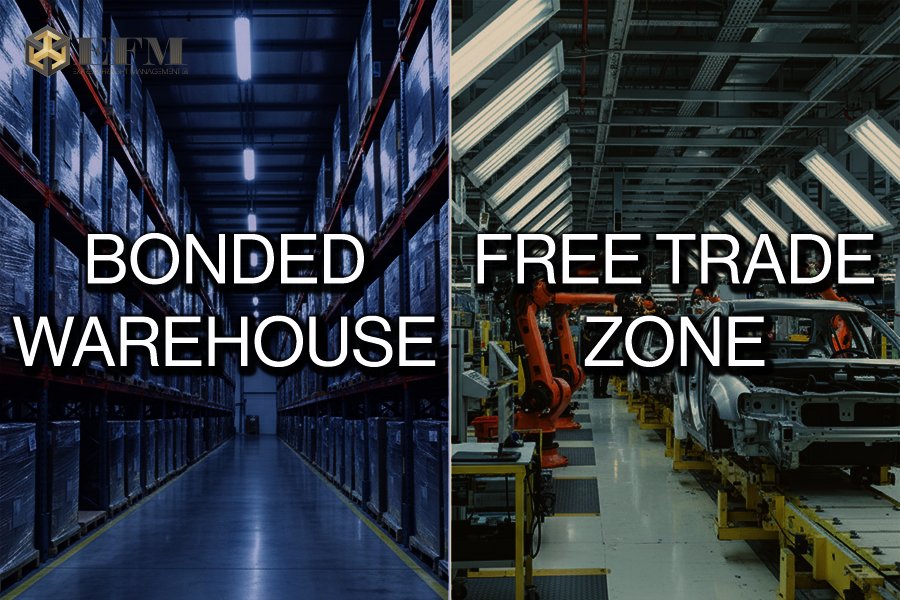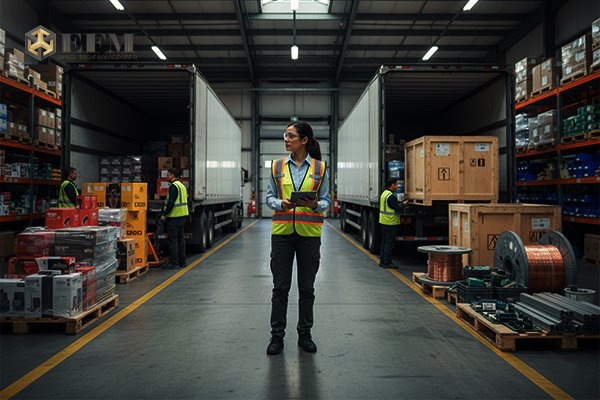Bonded Warehouse vs. Free Trade Zone

As U.S. businesses deepen trade relationships with ASEAN partners, the need for efficient supply chain management becomes critical. Tools like bonded warehouses and Free Trade Zones (FTZs) exist to help manage customs duties and logistics services, but they are not interchangeable. Understanding this distinction is key to making the right choice for your supply chain.
Key Functional Differences
The core difference between the two is their intended purpose and legal status.
| Bonded Warehouse | Free Trade Zone (FTZ) | |
| Customs Status | Within U.S. customs territory. | Outside U.S. customs territory. |
| Primary Use | Storage, with minor manipulations like sorting or repackaging. | Manufacturing, assembly, processing, and storage. |
| Duty Payment | Duties deferred until goods enter the domestic market. | Duties deferred. Paid only if goods enter the domestic market. No duties if re-exported. Option to pay duty on components or the finished product, whichever is lower. |
| Storage Duration | Typically limited to five years. | Indefinite. |
Customs Territory Status: A bonded warehouse is legally considered within U.S. customs territory and operates under direct customs supervision. In contrast, an FTZ is treated as being outside U.S. customs territory, meaning goods within it are not yet officially imported.
Primary Use: Bonded warehouses, a core component of warehousing, are designed almost exclusively for the storage of imported goods. Permitted activities are generally limited to cleaning, sorting, and repackaging. FTZs, however, are structured to accommodate a wider range of activities, including storage, assembly, manufacturing, and processing of goods.
Duty Payment: With a bonded warehouse, duties are deferred until goods are withdrawn for sale in the domestic market. In an FTZ, duties are also deferred, but businesses have more options. If goods are manufactured in the FTZ, the duty can be paid on either the imported foreign components or the final finished product, whichever is lower. If the final products are re-exported, no U.S. customs duties are paid at all.
Duration: Goods can typically be stored in a U.S. bonded warehouse for up to five years. FTZs permit goods to be stored indefinitely, offering greater flexibility for inventory management.
What Is Better For You

The choice between these options comes down to operational scale and complexity. One is a widely available service, the other a significant capital investment.
A bonded warehouse is the practical, flexible choice for the vast majority of businesses engaged in international trade. It is a service readily available through logistics partners like Express Freight Management, requiring no major investment in infrastructure or complex compliance overhead. Choose a bonded warehouse if your business:
- Is primarily a distributor, wholesaler, or retailer.
- Needs to improve cash flow by deferring duty payments on imported inventory.
- Stores goods in the U.S. before re-exporting them to other markets.
- Requires a simple, agile solution for managing inventory and customs clearance liability without high setup costs.
An FTZ, by contrast, is a specialized tool designed for large-scale manufacturing operations. Setting up and operating within an FTZ involves significant application processes, capital investment, and strict regulatory compliance, making it suitable only for companies with very specific needs. Opt for an FTZ if your business:
- Is a large-scale manufacturer that imports components to assemble into finished goods on U.S. soil.
- Exports a high volume of these finished products.
- Can achieve significant tariff savings by paying duties on the finished product rather than the imported parts.
- Has the capital and resources to manage the complex setup and ongoing compliance requirements.
Practical Example
In response to China’s recent power grab of strict export controls on rare earth minerals, President Donald Trump decisively announced plans to impose new 100% tariffs on Chinese goods (on top of the existing 30% tariffs) from November 1st, triggering one of the biggest cryptocurrency crashes in history.
When imported components are subject to a chaotic and high mix of tariffs—10% from one country (e.g. Singapore), 30% from another, and 50% from a third—the cost burden on a U.S. manufacturer is immense and unpredictable. By using an FTZ, a company can import all these variously-taxed components, assemble them into a single finished product, and then pay one single duty rate on that final product when it enters the U.S. market. This directly translates to huge cost savings.
Conclusion
In short, your business model dictates the correct facility. A bonded warehouse is the superior, practical tool for businesses focused on distribution, storage, and managing duties with flexibility and low overhead. Meanwhile, an FTZ is a heavy-duty, strategic investment for large manufacturers engaged in transformation and re-export. To determine the most advantageous path, it is best to consult with an experienced freight forwarder. A qualified partner can analyze your specific needs and manage the complexities of customs, storage, and transport, ensuring you implement the most effective solution.
For nearly two decades, Express Freight Management has been the trusted partner for businesses shipping between the United States and Southeast Asia. We handle the technological complexity for you, managing everything from carrier selection and customs clearance to warehousing. Discover a streamlined approach to logistics with Express Freight Management for your shipping needs between the United States and Brunei, Cambodia, Indonesia, Laos, Malaysia, Myanmar, Philippines, Singapore, Thailand, and Vietnam today!
